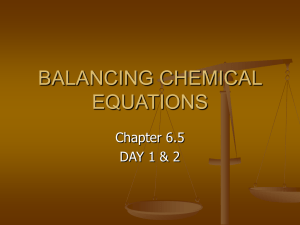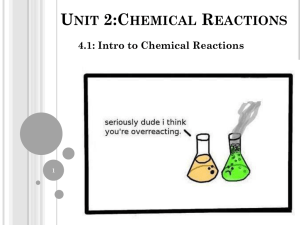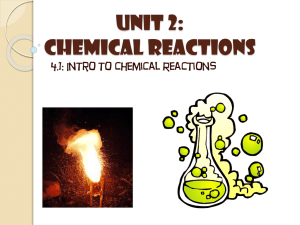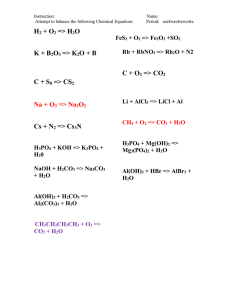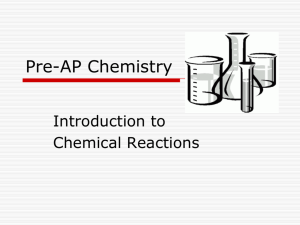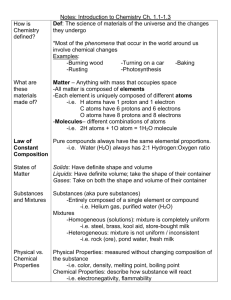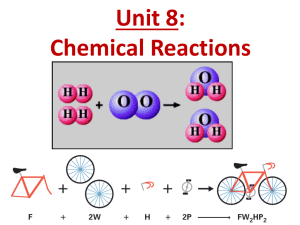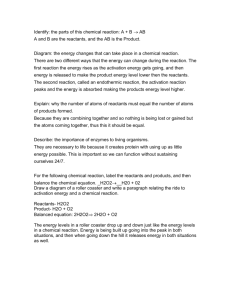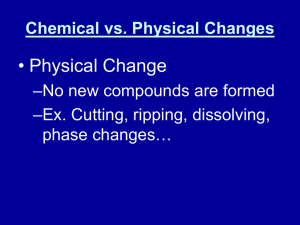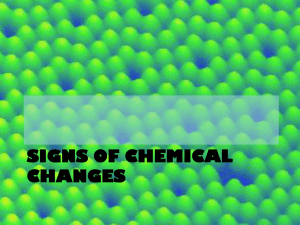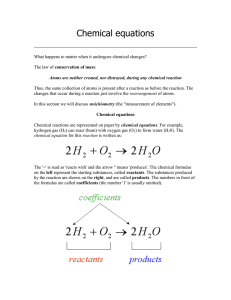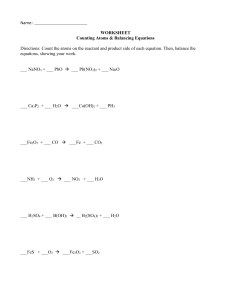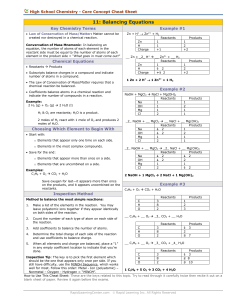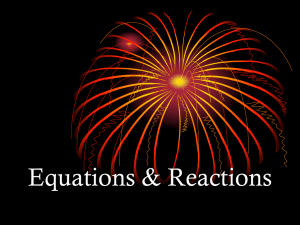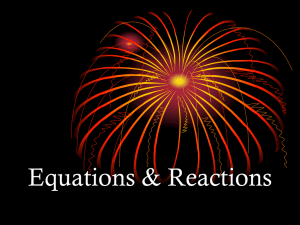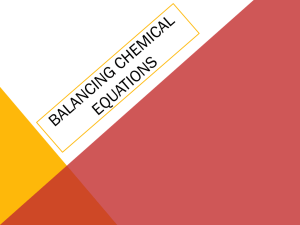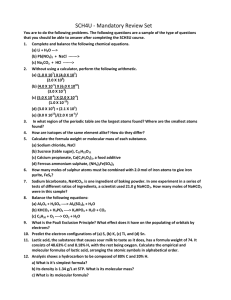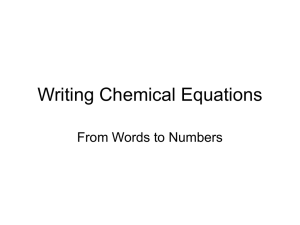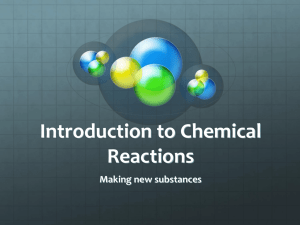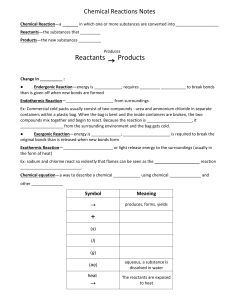Chemical Equations and Chemical Reactions Lavoisier’s law of
advertisement
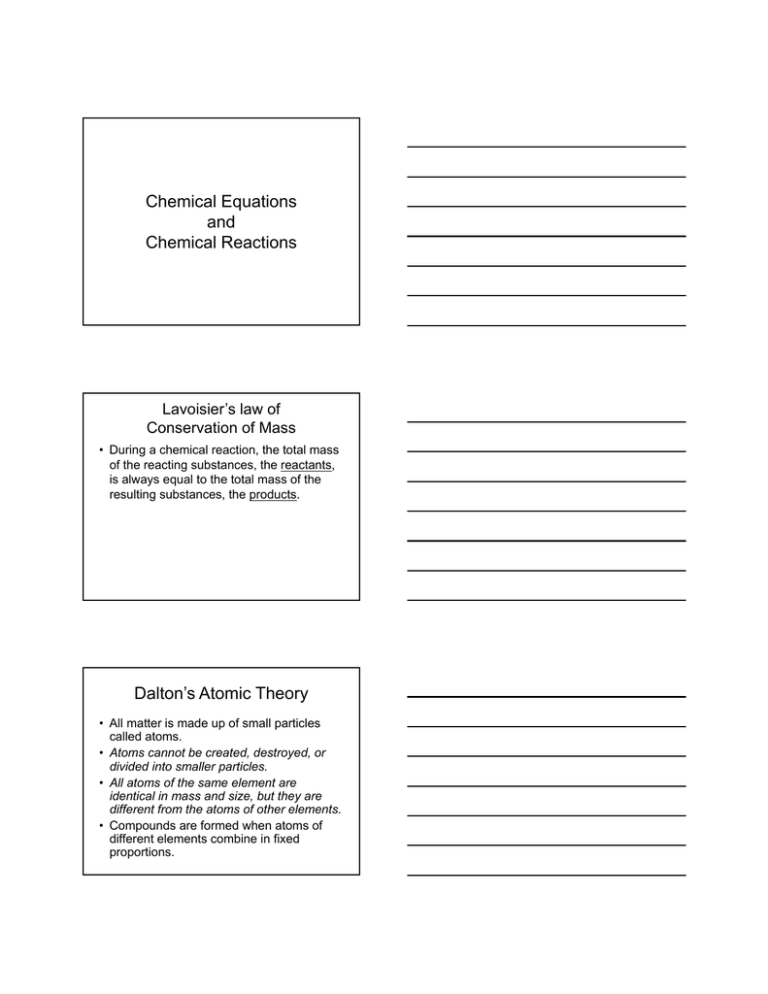
Chemical Equations and Chemical Reactions Lavoisier’s law of Conservation of Mass • During a chemical reaction, the total mass of the reacting substances, the reactants, is always equal to the total mass of the resulting substances, the products. Dalton’s Atomic Theory • All matter is made up of small particles called atoms. • Atoms cannot be created, destroyed, or divided into smaller particles. • All atoms of the same element are identical in mass and size, but they are different from the atoms of other elements. • Compounds are formed when atoms of different elements combine in fixed proportions. Writing Chemical Equations Word Equation • The equation is written in words: Reactants (left side) Products (right side) Hydrogen + Oxygen Water plus sign means “reacts with” arrow means “produce” Skeleton Equation • Summarizes chemical equation in symbolic form. H2 + O2 H2O Balanced Equation • Coefficients are added to ensure that the same number of atoms are on both sides of the equation. 2 H2 + O2 2 H2O States of Reactants and Products • Sometimes you need to know the state of the reactants or products: Solid (s) Fe(s) NaCl(s) Liquid (l) H2O(l) Gas (g) He(g) N2(g) Aqueous Solution (aq) Salt solution: NaCl(aq) 2H2(g) + O2(g) 2 H2O(l)
